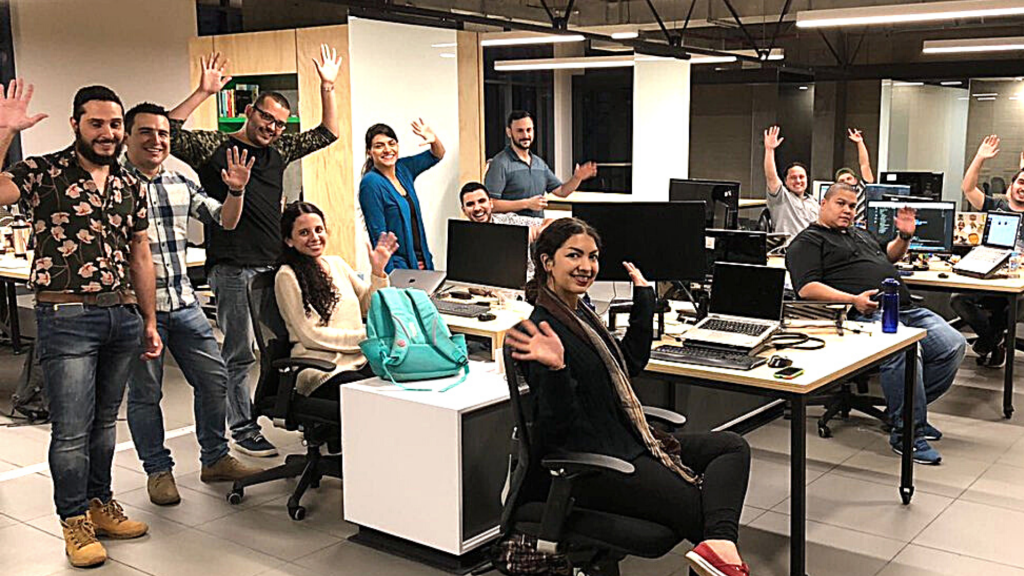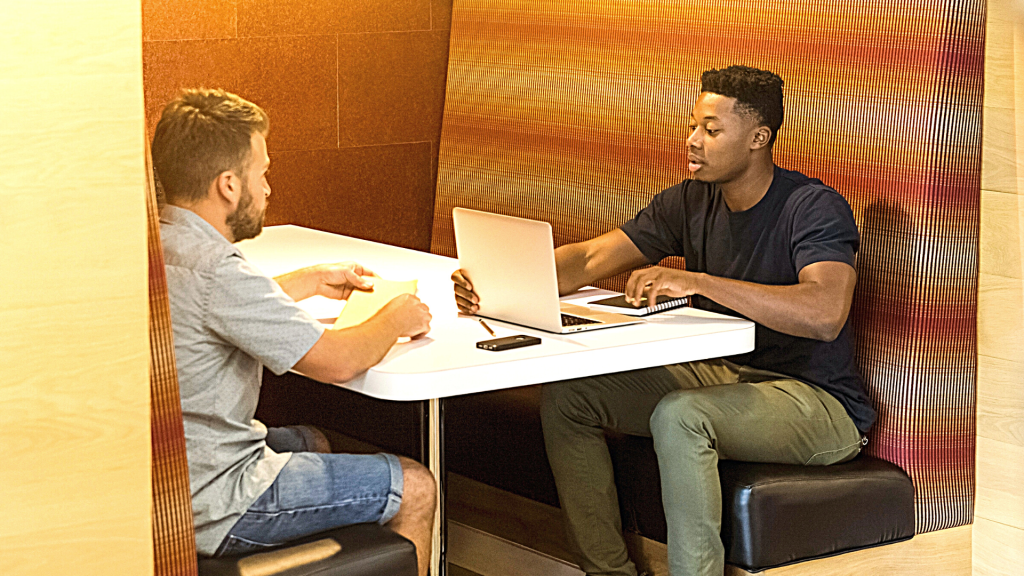Company wellness programs for millennials need a different approach in order to be effective. In today’s article we’ll be discussing how to do this and why it’s so important.
Ten years ago, businesses that included company wellness programs offering health benefits along with other perks, tended to be the ones able to retain and attract quality candidates. But millennials have a different set of priorities and stressors than the generations before them.

Millennials aren’t following in the steps of their parents and grandparents but instead are taking control of how and where to imprint their path in a way that’s specific not only to them, but to the world they live in. Things like good health benefits only have so much sway because many focus on a much bigger problem: their future.
How To Create Company Wellness Programs For Millennials
While health insurance remains a top priority in any company wellness program, there are numerous practices and perks that companies can incorporate into their business model to attract a diverse range of talent. One of the biggest challenges companies face isn’t initiating a program but ensuring its long-term success.
One of the biggest obstacles all companies have isn’t getting something to work; it’s keeping it working.
To stay competitive in an evolving workforce, businesses must recognize and adapt to the changing needs of their employees. This starts with understanding how millennials’ needs differ from those of previous generations. By addressing these unique needs, companies can create effective and appealing wellness programs for millennials.
RELATED: How to Design Wellness Programs That Are Successfu
Building A Strong Foundation for Millennials: 5 Steps To Success
#1 – LEARN WHAT ISSUES MATTER TO THEM
One reason health insurance isn’t the primary focus of millennials stems from the heightened cognizance of substantial issues like:
- climate change
- pollution
- inequality
- accessibility to healthy food
- affordable housing
- work-life balance

Make sure to take the time to learn how to stay relevant by asking team members directly about the things that matter to them. This could be as simple as a google form or a quick email.
RELATED: 10 Questions to Ask Before You Start a Wellness Program
#2 – MODEL HEALTHY BEHAVIOR
One of the best ways to begin any change is to start by modeling habits. If you want your team to be the healthiest, you can start by demonstrating from the top. Incorporating healthy activities and discussions into daily routines helps turn those routines into habits.
Engage in conversations about healthy practices you’re passionate about and highlight how the company will help implement those practices.
RELATED: 13 Office Wellness Ideas to Improve Employee Productivity
#3 – PROVIDE SOME HEALTHY AUTONOMY
Company wellness programs designed with a one-size-fits-all approach often fall short, as they may not cater to every employee’s needs. Over the last decade, a major shift in the workplace has highlighted that people desire freedom.
They don’t want to be told how to be healthy; they want to be provided opportunities to be healthier.
Ultimately, it’s about offering freedom of choice. By providing a range of options, employees can take control of their health and select the best path for their individual wellness journey. This approach allows them to personalize their health initiatives, fostering a sense of ownership and autonomy.
RELATED: 7 Ways a Virtual Wellness Program Makes Employees Healthier
#4 – REMEMBER THAT APPRECIATION MATTERS
While we all need enough money to make sure that we can pay for our necessities, significant research indicates that appreciation is one of the weighing champions when it comes to the satisfaction of team members.
Showing them that what they do matters is a great practice to improve team happiness, and ultimately leads to better performance.
Of course money talks, but why not try other forms of appreciation and recognition in addition to monetary gains? These can be anything from swag to written thank you cards, catered lunches to social media shout outs or even unexpected flex hours.
#5 – IMPLEMENT SUSTAINABLE POLICIES
Don’t get stuck in outdated company policies. Find the things that will matter most to your team and model your business after those needs. Be flexible and recognize that wellness is continually evolving.
What if the key to consistency lies in adapting to the idea that change is constant? So instead of trying to avoid change, we embrace it. Sometimes this is just the right move for your wellness program.
RELATED: What Happens After 2 Years of Employee Health and Wellness Programs?

Step 1: Learning What Matters in Company Wellness Programs for Millennials
One of the most pressing issues affecting humanity today is not just the decline of our health, but the deteriorating health of our planet. People are increasingly aware of the damage inflicted on Mother Earth and feel powerless as they witness global events unfold. They are searching for their role in this larger picture.
Use your company as a platform to help create change.
Why not use your company as a platform to drive positive change? In today’s world, many individuals are concerned about their future and seek out companies that offer more than just good pay and benefits. They are looking for organizations with strong values that actively contribute to making a difference.
WHERE TO START
Think local. While it’s impossible to solve all the world’s problems, it is possible to solve some local issues.
- Food Drives
- These are great, but often only happen during the holiday season.
- Consider quarterly food donations, or even sponsoring a local family for an entire year.
- Reduce Waste
- Take a fine toothed comb to your expenses and identify the things your company can either eliminate or find better solutions for.
- Ask your employees where they see unnecessary waste and come up with solutions together.
- Spend Time With Animals
- Consider sponsoring ethical adoption events with notable organizations.
- Organize volunteer opportunities at local rescue centers promoting ethical animal practices.
- Carbon Footprint
- Be conscientious and open with your team about this topic. This open communication will create trust and garner employee loyalty.
- Educate company leaders on how they can improve your company’s carbon footprint and track the changes you see.
RELATED: How to Design Wellness Programs That Are Successful
Step 2: Create Spaces Promoting Health
The easiest way to show a team that health matters is by creating a space that reflects a healthy lifestyle. It’s common knowledge that people are more likely to participate in things if it’s easy for them.
By emphasizing the atmosphere designed with health as a focus, people will naturally think about their choices and will want to engage in the healthy opportunities they are provided.
WHAT A HEALTHY ATMOSPHERE LOOKS LIKE
Functional, ergonomic, and comfortable furniture is essential. The space they spend the majority of their time in must be comfortable.
- Invest in furniture that supports them instead of hurting them, if you want to keep them around.
- Give them the option of a standing desk when possible.
- Give them room to breathe, meaning stagger their spaces to avoid claustrophobia.

Intentionally use color for specific outcomes.
- Earth tones such as blues, greens, and browns help us remain calm – they’re great for high-stress environments.
- Bright pinks, greens, purples, and yellows inspire creativity and energy – best in creative fields.
- Greys, whites, and blacks promote clarity – best for rooms that need little to no distraction.
Provide meaningful reading material that supports wellness.
- Consider creating a company newsletter on wellness tips.
- Provide health and fitness magazines in break rooms.
- Share wellness articles with your team and encourage the same from them.
Don’t forget about lighting and how it has a significant impact.
- When possible, choose spaces for employees with windows and let the light in on a regular basis.
- Be mindful of the shades of light bulbs you use to help avoid headaches.
- Encourage teams to walk on breaks, especially outdoors.
RELATED: 7 Reasons Every Worksite Should Offer An Environmental Wellness Program
Step 3: Providing Healthy Autonomy, Crucial In Company Wellness Programs For Millennials
While we aim to promote healthy lifestyles across our companies, their success ultimately depends on individual efforts. It’s not possible to force someone to change, but we can provide the resources needed to support a healthy lifestyle.
The key to a successful program is simplicity; if the programs are easy to follow, they become attainable and are more likely to succeed. This is especially true for company wellness programs designed for millennials.
WAYS TO INTRODUCE AUTONOMY INTO YOUR WELLNESS PROGRAM FOR MILLENNIALS
- Organize Health Screening Days: when possible, arrange these with local organizations such as a mobile mammography unit.
- Learn the Specific Food Sensitivities of Your Team: provide adequate snacks for them in break rooms that everyone will be able to enjoy.
- Ask About What Apps They’re Using: consider covering the costs of the apps that promote health and wellness.
- Tempt Them With Cool Health Gear: rather than cash incentives, think Lululemon clothes and Apple watches.
- Coordinate Fun Group Activities: promote regular movement with contests or visits to local parks.
RELATED: 24 Ways Employers Can Manage Stress at Work (Use Them Today)

Step 4: Show Them They Matter
Significant research has identified that appreciation is more important than pay. It plays a massive role in not just retention but in employee satisfaction.
The 5 Languages of Appreciation in the Workplace by Gary Chapman and Paul White was designed as a guide to be used by any organization wanting to infuse gratitude, improve productivity, and better office interactions.
Chapman and White’s Guide On Showing Appreciation
- Words of Affirmation – thank you notes, formal praise, and acknowledgment for a job well done, especially said directly in person.
- Quality Time – teams spending time together doing non-work activities such as playing board games, frisbee golf, or doing a coloring contest.
- Acts of Service – teams that give back by serving others will find more value in their jobs.
- Gifts of Monetary Value – give team members an item of value, not always just a bag of bulk swag, but bonuses and gift cards.
- Acts of Praise – high fives, handshakes, or fist bumps go a long way in showing people you care.
Step 5: Focus on Sustainability in Your Wellness Program
Thinking about sustainability alone is a thing of the past; we’ve reached the limit of what we can ignore. We need to swiftly embrace this idea in our wellness programs for millennials. It’s time to take action, the faster the better.
One major reason people leave their jobs quickly isn’t just about the job; they want to spend their precious time on things that align with their core values.
They don’t want to spend the precious time they have on earth doing things that don’t align with their core values.
COVID taught us a valuable lesson: not to take our time for granted. It revealed our fragility in an instant, and people have had enough. Show them you’re on their side in this fight and create a workspace that advocates for the future instead of contributing to its demise.
RELATED: Outcomes-Based Wellness Programs – An Example From The Real World
THERE’S NO NEED TO REINVENT THE WHEEL
The best thing about sustainability is that we have the information we need to know about it. As long as we follow the model reduce, reuse, recycle, we will have an immediate impact that our team will see, feel, and be inspired by.
REDUCE
Reducing our waste is hands down the best way to spend our recycling efforts. This isn’t as hard as many people make it out to be, but it does require flexibility and a little elbow grease.
Get rid of those plastic water bottles!
- It’s impossible to implement any sustainability practices if you don’t model the core fundamentals.
- Water tastes better in aluminum, glass, and ceramic.
- At this point, plastic water bottles are irresponsible.

Evaluate the products you use and look for alternatives.
- Why buy paper wrapped in plastic when you can purchase paper wrapped in paper
- Keep Tupperware containers readily available that can be taken to restaurants for people that intend to bring back leftovers.
- Avoid single-use plastic products, no matter how convenient they are.
Start a Compost Bin
- This isn’t as hard as it might sound and significantly reduces unnecessary waste in landfills.
- Keep a bin for your used coffee grounds and donate them to local farmers.
REUSE
When we can’t eliminate a plastic object, we need to do our best at repurposing them. We are so accustomed to throwing away things as soon as we’re done with them.
But by putting those things to use, the amount of waste that we save each year will quickly add up.
- If your office needs upgrades to any of its equipment or furniture, find a local business that could use your unwanted goods and donate items to them.
- Or instead of getting rid of that old furniture, consider repurposing it for another need.
- Reuse the containers and boxes your supplies come in when able. They might not be as pretty inside in the office cupboards, but they’ll help ensure the beauty of our world.
Why We Need To Constantly Re-Visit Company Wellness Programs For Millennials
Utah resident Libby Leonard, a 28-year-old writer and retail manager, explains how company benefits are at the bottom of her list when considering a career change.
“Of course, I want health benefits, we all want that. But that would never be enough to lure me into a company I don’t believe in. I’m much more interested in companies that produce quality products, follow ethical guidelines, and treat their people with appreciation.”
I’m much more interested in companies that produce quality products, follow ethical guidelines, and treat their people with appreciation.”
Libby Leonard, Utah
Leonard isn’t alone. As much as workers meeting her demographics need health benefits and retirement packages, they’re increasingly becoming more focused on needs outside of their own. They’ve had enough of harmful working conditions and unethical company operations in return for a benefits package. Those perks are no longer worth the price of admission.

The newer workforce doesn’t want to choose between company wellness programs and companies they believe in. They want it all, and the way things are shifting and changing, it looks like they’re going to achieve it.
Why not be a trailblazer and take your team in a direction they’ll be proud of, and will want to be a part of?
RELATED: How to Design Wellness Programs That Are Successful
Next Steps on Implementing Company Wellness Programs For Millennials
Millennials are typically ideal for companies because they often come with a new point of view, leading to a fresh perspective. Company Wellness programs, considering all ages, help companies attract supreme talent. These are the companies that will be more successful in keeping their teams together for the long haul.
Are you looking for more ideas on how to start a company wellness program? Explore our Wellness Program Solutions here and schedule a free demo with our team to discover how to get started.
